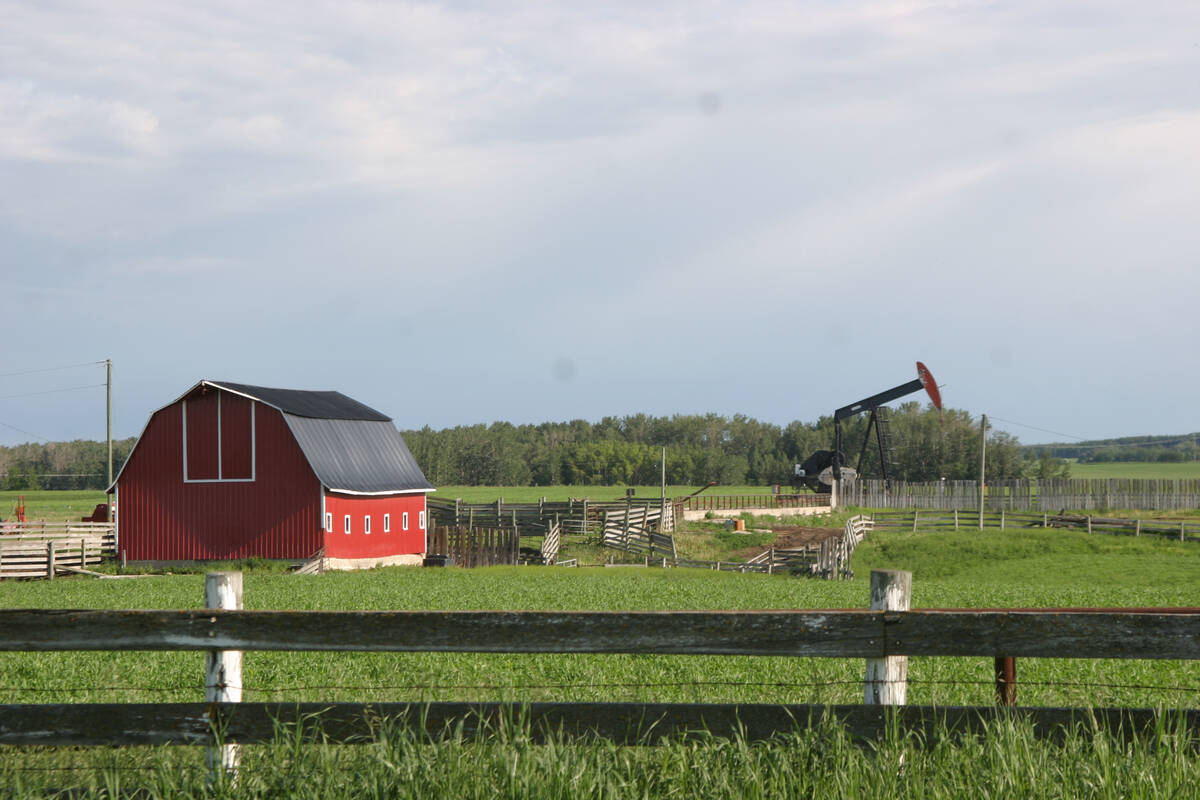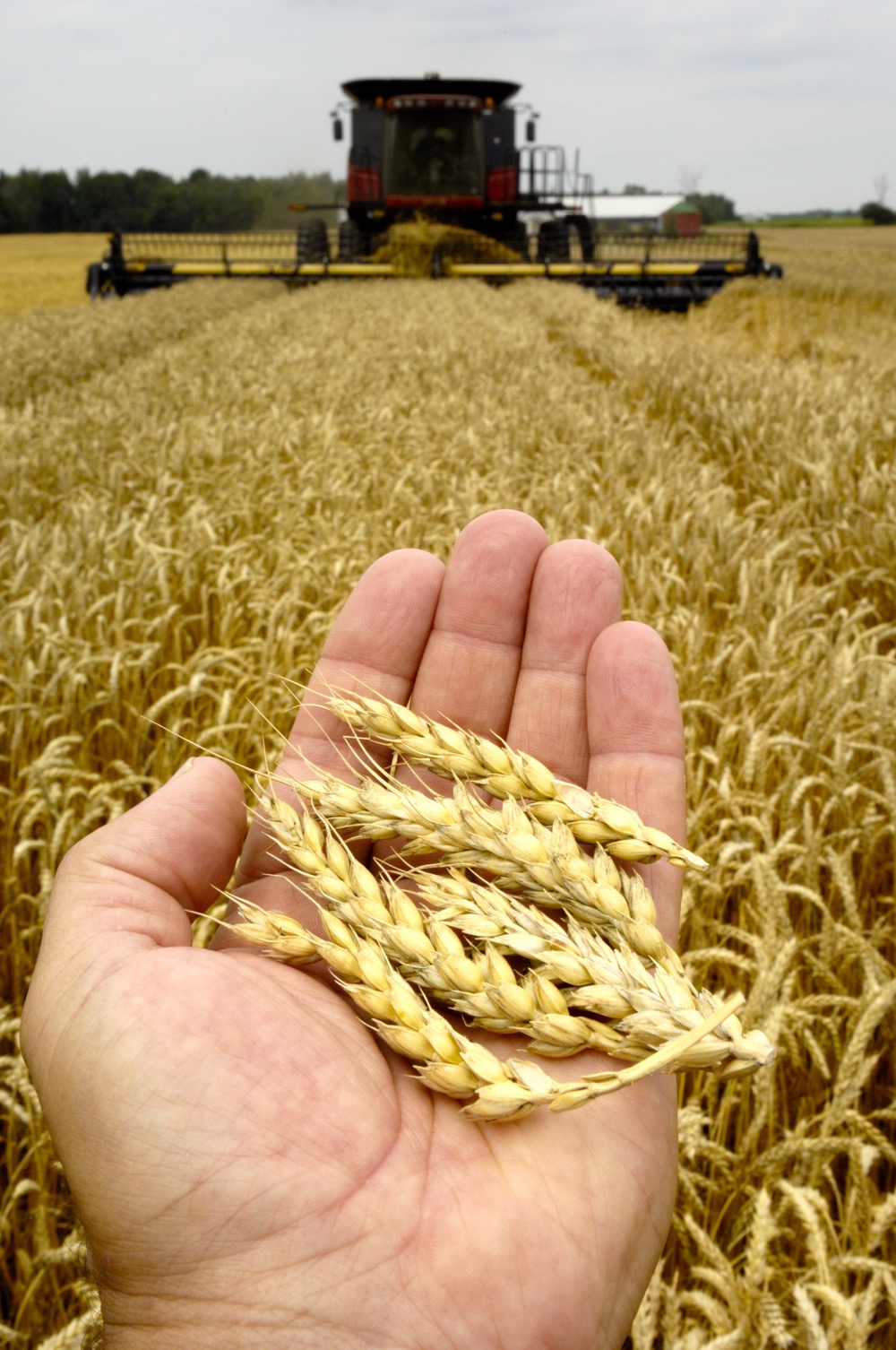The business of building grain elevators is — pardon the pun — on a runaway train.
The growth has been, by any measure, phenomenal. In just the last four years, elevator companies have added 1.2 million tonnes of storage — a 16 per cent jump.
And that expansion train isn’t slowing down.
Late last month, G3 Canada announced it’s building another pair of 42,000-tonne facilities, one of them at Rycroft. As well, Richardson’s new 45,000-tonne elevator at Huallen (near Grande Prairie) and a similar one in Saskatchewan will be ready soon along with two more (34,000 tonnes each) that Viterra is building in Saskatchewan.
The addition of so many new elevators (not to mention new companies) will drive the level of competition and customer choice to levels not seen before, said the general manager of Alberta Wheat and Alberta Barley.

“Coming out of the Canadian Wheat Board single-desk system that ended in 2012, there were predictions by industry that we’d see more competition in the market and I would say that has definitely come into play,” said Tom Steve.
When it comes to total builds, Viterra and Richardson Pioneer are the big two with more than 120 elevators between them, followed by Parrish & Heimbecker, Paterson Grain, Cargill and G3 Canada. Collectively, they operate nearly 100 elevators.
In the summer of 2017, those six companies had a storage capacity of 5.7 million tonnes in their Prairie elevators, according to Canadian Grain Commission data. But by August of this year, it topped 6.8 million tonnes. As well, new entrant GrainsConnect built four 35,000-tonne-capacity elevators during that time, so the seven-million-tonne mark will soon be passed.
Read Also

Recommendations in the mature assets strategy could cause potential problems for landholders
The Western Stock Growers’ Association urges producers to pay attention to the potential changes to Alberta’s Mature Assets Strategy.
But storage capacity is only a rough measure of grain-handling ability. What really counts is throughput — how much grain can be moved in a given period of time.
And that’s changed dramatically, too.
All of these new elevators come with loop tracks that allow much faster loading of longer trains (as little as half a day for 150-car unit trains that carry a lot more grain thanks to more modern hopper cars).
Loop-track/power-on terminals can improve the efficiency of the loading and unloading process by up to 50 per cent over conventional straight-track facilities. (Because the locomotive is never decoupled on loop tracks, the train doesn’t have to spend time restoring pressure to its air brakes and can depart as soon as it’s loaded.)

As well, Super Bs can be unloaded in as little as five minutes at the new elevators.
“There’s no question that these new facilities are built for efficiency,” said Steve. “Loop tracks are a lot faster than the traditional side-by-side ladder tracks that have been used in the past, so they definitely have some potential for improvement. We have seen most of the new builds by all the companies moving to loop tracks.”
Two of those companies are relative newcomers, with the most prominent being G3 Canada (largely owned by SALIC, short for Saudi Agricultural and Livestock Investment Company). The company had no elevators in Alberta only two years ago and now has six (soon to be seven), each with a capacity of either 34,000 tonnes or 42,000 tonnes. It also has a massive new terminal on Vancouver’s North Shore that accommodates three 150-car trains and has three large ship loaders that can collectively move 6,500 tonnes of grain an hour.
The other new player is GrainsConnect (a joint Australian-Japanese venture) that built four 35,000-tonne-capacity elevators (two of them in Alberta). And Parrish & Heimbecker has grown its capacity by two-thirds since 2017 (through both new builds and acquisitions).
But all that additional capacity isn’t just about numbers — it makes a real difference when you go to sell your grain, said Steve, pointing to G3’s new builds as examples.
“In the case of the build at Rycroft, in speaking to my grower directors up in that area they’re pretty thrilled to see another competitor come into the market,” he said.
“I’m pretty familiar with the Melfort area in Saskatchewan because I initially worked in the grain industry in Saskatchewan. That market has no shortage of competition but again I’m sure the farmers in that area will welcome a new player on the scene.”
The railway factor
As great as these new builds have been for reducing bottlenecks in the grain transportation system, it’s not the whole story, said Steve.
Rail capacity needs to keep up with all this growth in storage and throughput, he said.
“I would say the greater amount of our focus has been on making sure the rail capacity keeps up with the infrastructure being built by the grain companies because we still have only two railways — CN and CP — that move the majority of our grains, oilseeds and special crops to port either in Vancouver or Prince Rupert.
“So we’ve made a point of pushing the railways to make sure they’re going to be able to meet the needs of all this new capacity that’s coming on stream.”
And both have stepped up to the plate in recent years, said Steve.
There was a series of grain backlogs in 2013-14 and another in 2017-18. However, both railways have been making efforts, and spending money on infrastructure, to prevent those kind of bottlenecks over the last few years, he said.
“Since then CN and CP are both required to provide winter movement plans to the federal government,” he said. “They have done that and have stepped up in terms of moving more grain to port.”
Still, Steve wonders what the movement of bulk grains is going to look like at the end of the pandemic.
“The only question we have is, what will happen in the future when our economy returns to more normal shipment of other bulk commodities? We saw record movement by both CN and CP last year and a lot of that was due to the fact that other types of shipping were depressed because of the pandemic situation and less demand for railway services.”
Although it doesn’t affect the movement of bulk grains such as wheat and barley, Steve said he’s concerned about the global shortage of containers that has broadsided the pulse and special crops industries, which move most of their product that way.
“But from a bulk shipping standpoint we’ve been doing well.”
– With files from Glenn Cheater
















